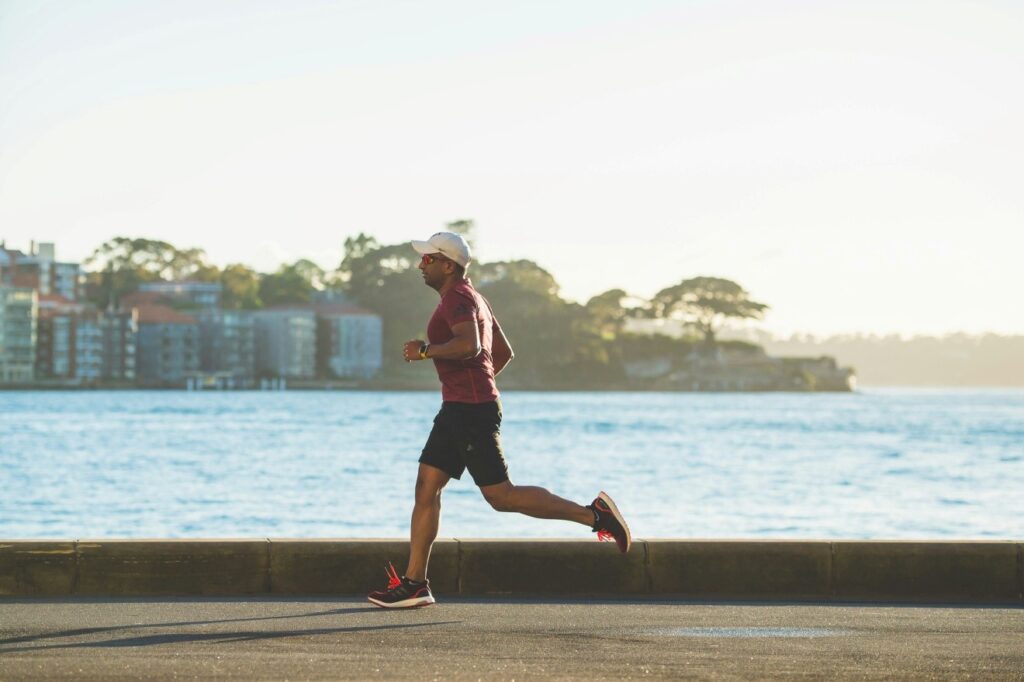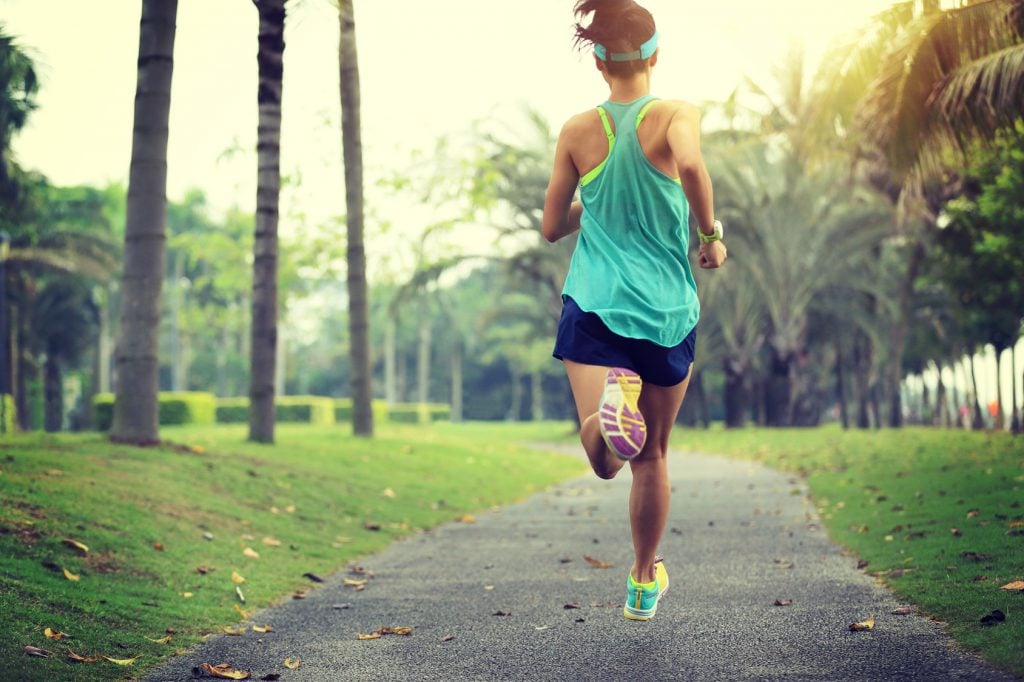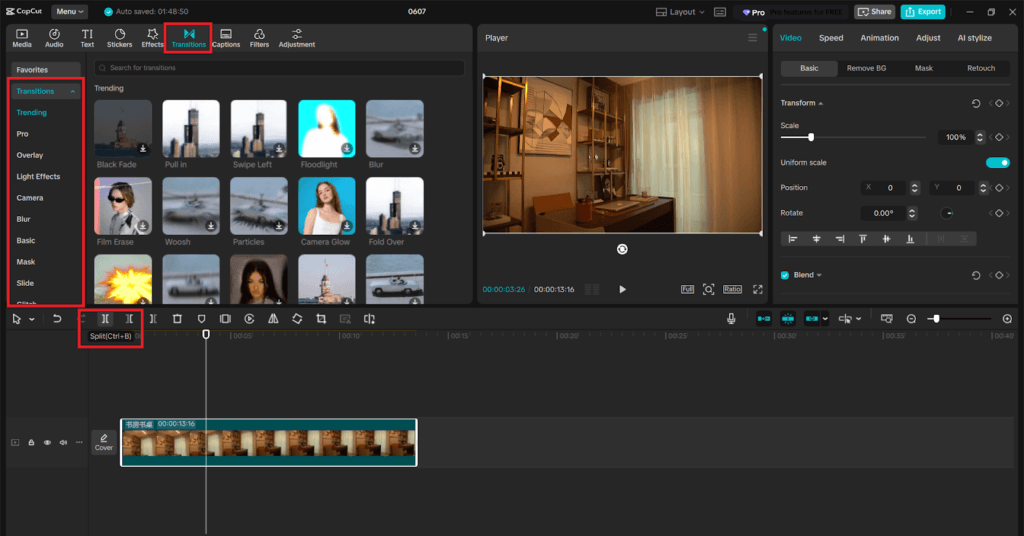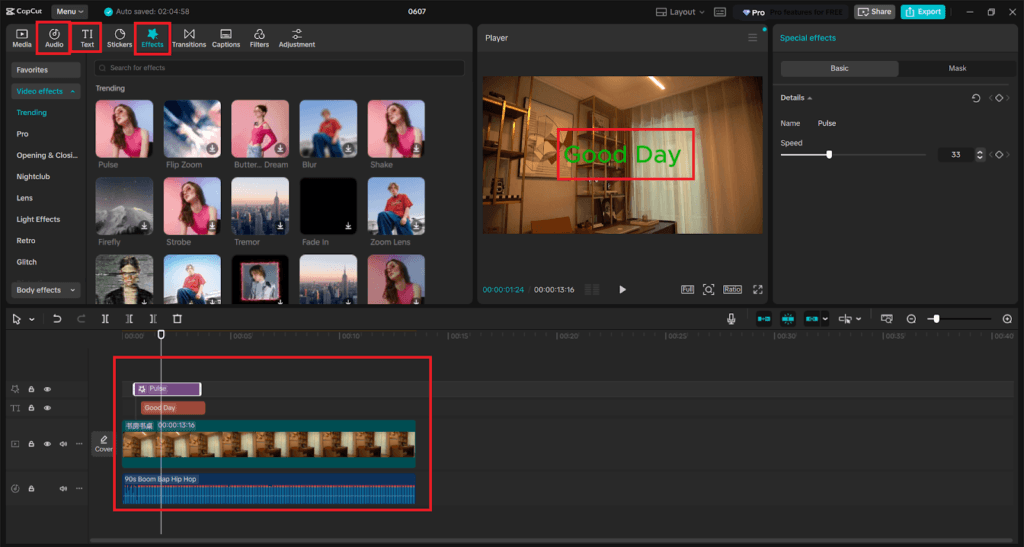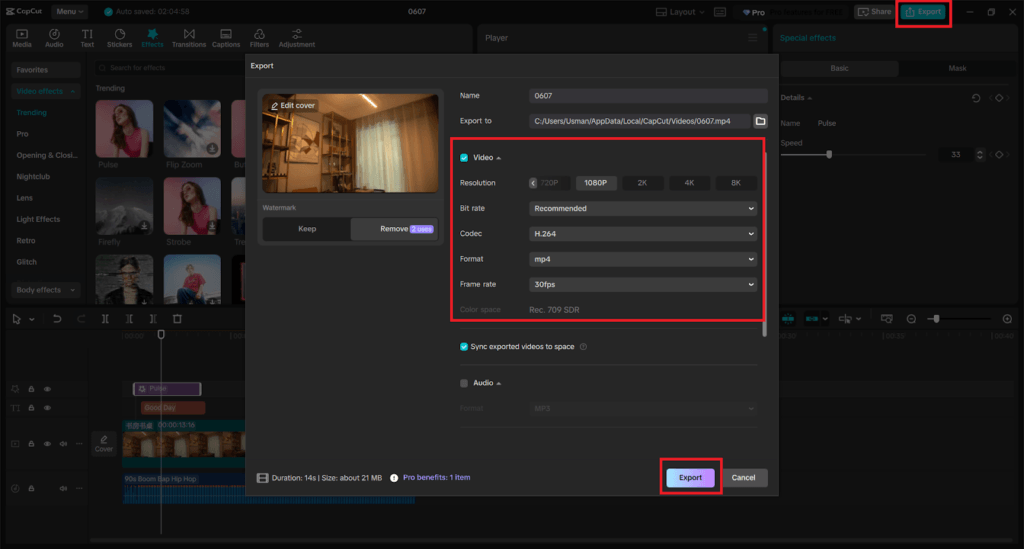Picking the perfect gift for a runner can be tricky.
And if you’re not a runner, it gets even tougher. I’ve been there—getting some awesome gifts and, well, a few duds.
But here’s the truth: when a gift really hits the mark, it feels way better.
Like when my partner gave me the best gift ever—Salomon trail shoes.
I’ve tried tons of shoes before, but none gave me the stability I needed for the trails.
But those shoes?
Absolute game-changer.
Not the flashiest, not the priciest, but precisely what I needed.
And knowing she truly got my needs? That made it the perfect gift.
Whether you’re shopping for a marathoner, a trail runner, or someone just lacing up, this list’s got you covered.
1. Running Boxer Shorts
We all need underwear, but not all of it’s built for running. For runners, comfort is key, especially on those long runs. The breathable, moisture-wicking New Balance boxer shorts are perfect for long runs, keeping you dry and comfy.
If you’ve ever dealt with chafing, you know how much a good pair of shorts can make a difference.
2 Running Jackets
There’s nothing worse than heading out on a cold morning run and realizing your jacket isn’t cutting it. A good running jacket, like the REFLECT360, will keep your runner warm, dry, and seen in low light.
Fleece-lined with 360-degree reflectivity, this jacket is built to tackle harsh weather. And yes, it’s breathable, so you won’t overheat.
3. Compression Socks
Compression socks aren’t new, but they’re around for a reason. They boost circulation, speed up recovery, and help prevent injuries. If you’ve a history of shin splints or calf cramps, these Zensah socks will make a huge difference.
4. Road ID Bracelet
Let’s be honest, most of us runners forget our IDs. But if you’re running alone or in remote areas, a Road ID is a must-have. You can get one with your runner’s medical info and emergency contacts, so they’re always prepared.
5. Running Headlamps
For early morning or late-night runs, a headlamp like the Black Diamond ensures both you and vehicles can see each other.
6. Hydration Backpack
Long runs need hydration, and a pack like Nathan’s TrailMix lets your runner sip without bouncing or chafing.
7. Trigger Point Foam Roller
Recovery is key—and trust me, I’ve seen too many runners skip it. This foam roller is a must-have for keeping your muscles loose after tough runs.
8. GPS Watch
If there’s one gadget I’d recommend for every runner, it’s the GPS watch. It tracks everything—distance, pace, heart rate, calories burned. It’s like having a coach right on your wrist.
9. Wireless Earphones
Music can totally change the game on long runs. But the last thing you want is earbuds that fall out or get drenched in sweat. I’ve tried a few, but the Jabra Elite Active 75t are by far the best.
Sweat-resistant, long battery life, and they actually stay in place.
10. Strava Subscription
For the runner who loves tracking every mile, Strava Premium opens up a whole new level of insight.
From detailed performance metrics to segment tracking, this is the gift that keeps on giving.
11. Personalized Finisher’s Poster
If you know a runner who just finished a big race, this is a no-brainer.
A personalized finisher’s poster is a great way to commemorate their achievement. It’s not just about the race—it’s about celebrating the hours of hard work they put in to get there.
12. Medal Hanger
For every runner who’s earned their medals, a medal hanger is a perfect way to display those victories. It’s not just practical; it’s a constant reminder of their progress. And who doesn’t love seeing those hard-earned race results hanging proudly?
13. Peloton High-End Treadmill
Now, this one’s a bit of a splurge. But if you’ve got someone who’s a die-hard runner, they’ll love the Peloton treadmill. Not only is it sleek and high-tech, but it’s designed for top-tier indoor running. The only thing missing is the ability to have a coach yelling at you mid-run. Wait, that’s me.
Want a cheaper option? Check out this guide.
14. Weighted Vest
For those looking to take their training to the next level, a weighted vest is the way to go. This gift is for the hardcore runners—those looking to push themselves further.
It’s a great tool for strength training, as well as increasing training intensity. I’ve used a weighted vest in my training, and it’s killer for building stamina.
15. Massage Gun
Recovery is everything—and a massage gun is the perfect tool for that. The Theragun Mini is one of the best portable options out there, helping to relieve muscle tension, improve blood flow, and reduce soreness after long runs.
The compact design makes it easy to take on the go, and it’s a game-changer after those hard training sessions.
16. Foam Roller
It might seem basic, but don’t underestimate the power of a foam roller. It’s an affordable yet effective recovery tool that helps loosen tight muscles and increase flexibility.
I personally use the TriggerPoint GRID Foam Roller—its multi-density design targets different muscle groups and helps prevent injuries.
If your runner is training hard or logging high mileage, a foam roller will be a trusted companion in their recovery arsenal.
17. Massage Ball
A massage ball, like the TriggerPoint MobiPoint, is perfect for targeting those deep muscle knots that foam rollers just can’t reach. Whether it’s for sore feet, tight hips, or shoulders, this small yet mighty tool helps to relieve tension and improve mobility.
I keep one in my gym bag for on-the-go relief after runs. The compact size makes it a portable recovery solution that doesn’t take up much space but works wonders.
18. Running Journal
Running isn’t just about the physical challenge—it’s a mental one too.
A running journal, like the Believe Training Journal, is an excellent gift for those who want to track their progress, set goals, and reflect on their training journey. It’s not just about logging miles, but about documenting the highs and lows of the run.
I’ve found that journaling helps me stay focused, celebrate small wins, and work through challenges. It’s a great way to keep the passion alive when motivation wanes.
19. Inspiring Books
Books about running can be just as motivational as an excellent training session. One of my favorites is What I Talk About When I Talk About Running by Haruki Murakami.
It’s a meditative look at the sport that will inspire any runner, no matter their experience level. If your runner is looking for inspiration or new insights, a running-related book is a thoughtful and personal gift that can encourage them to lace up and keep going.
20. Personalized Running Socks
Yes, socks again—but trust me, they make a huge difference.
You can never have too many pairs of high-quality running socks. These customized socks from Feetures not only offer excellent support, cushioning, and moisture-wicking properties, but you can also personalize them.
Whether it’s with their name, race bib number, or a meaningful date, this small touch makes them even more special.
21. Custom Strava Mug
For a runner who’s always tracking their progress on Strava, a custom Strava map mug is a great way to celebrate a personal achievement. You can get it personalized with the runner’s favorite route, race, or personal best.
Every time they sip their coffee or post-run smoothie, they’ll remember the miles they’ve conquered. It’s a simple, yet meaningful gift that reflects their passion for the sport.
22. Resistance Bands
Resistance bands are a versatile, budget-friendly addition to any runner’s toolkit. Whether they’re used for warm-ups, strength training, or injury prevention, resistance bands offer a great way to add variety to training.
I personally love using them for lower-body activation before a run and for stretches post-run. They’re small, easy to store, and incredibly effective for improving strength and flexibility.
23. Runna App Subscription
For runners looking to level up their training, a subscription to the Runna app is a game-changer. This app offers personalized training plans that adapt to your runner’s goals, whether it’s a 5K, half-marathon, or ultra.
With a Runna subscription, they’ll get tailored workouts, nutritional advice, and expert coaching—perfect for those who need a little extra guidance on their journey.
24. Reflective Gear
Safety is always a priority when running in low-light conditions. Reflective gear like the Amphipod Xinglet Vest ensures your runner stays visible to drivers, cyclists, and other pedestrians.
With its lightweight, adjustable fit, this vest won’t interfere with their stride but will keep them safe on evening or early-morning runs.
25. Running Visor
For those who run in sunny conditions, a running visor is a great alternative to a full hat.
The CEP Foldable Running Cap is a top pick, offering excellent UV protection and breathability while keeping sweat out of the eyes. It’s lightweight and moisture-wicking, making it a must-have for long runs in the heat.
26. Night Scope Rechargeable LED Warm Knit Beanie
For winter runners or anyone who enjoys the cooler early morning runs, this LED beanie from Night Scope is perfect.
Not only does it keep your runner’s head warm, but the built-in LED light will ensure they’re visible on those dark mornings or evenings.
It’s rechargeable, comfortable, and functional. Trust me, it’s a game-changer for those who hate running in the dark.
27. Garmin Forerunner 265
If you’re looking to splurge on a truly elite gift for a runner, the Garmin Forerunner 265 is a top contender. This GPS watch not only tracks pace, distance, and heart rate, but it also offers advanced metrics like VO2 max, lactate threshold, and recovery insights.
For anyone serious about their training, this watch becomes an essential tool. As a coach, I can tell you that the data you get from this watch is invaluable for adjusting your workouts and tracking progress over time.
28. Hyperice NormaTec Compression Boots
For the ultimate in post-run recovery, nothing beats the Hyperice NormaTec 3 Compression Boots. These boots use dynamic air compression to increase blood flow, reduce muscle soreness, and flush out lactic acid.
If your runner is a high-mileage athlete or someone training for a big event, these boots will be a game-changer for their recovery routine.
29. Endure: Mind, Body, and the Curiously Elastic Limits of Human Performance
Running is just as much mental as it is physical. Endure by Alex Hutchinson takes a deep dive into the psychology of endurance, offering insights into how the mind plays a pivotal role in how far we can push our bodies.
This book is perfect for the runner who’s interested in the science behind endurance sports and wants to better understand the mental barriers that keep them from achieving their goals.
30. 26 Marathons by Meb Keflezighi
For a runner who’s inspired by marathon greatness, 26 Marathons by Meb Keflezighi is a must-read. This memoir from one of the most respected marathoners of our time details the lessons he’s learned from each of the 26 marathons he’s run.
It’s filled with invaluable insights and inspiring stories that will motivate any runner to lace up their shoes and take on the distance.
31. Recovery Sandals
For runners who log the miles, their feet deserve to be treated well. Oofos OOahh Slide Sandals are designed with patented foam that absorbs impact and provides superior arch support.
After a tough run or a long day on the trails, slipping into these sandals can make a huge difference in recovery. They’re also incredibly lightweight, so they’re easy to pack for races or post-run relaxation.
32. Knee Compression Wrap
A Cool Knee Compression Wrap by Xena Therapies is a perfect gift for runners dealing with joint pain, especially after long runs or intense training sessions.
Made with phase-change materials, this wrap cools down to provide relief for achy knees and can help reduce inflammation.
It’s ideal for runners who suffer from knee pain and need a tool that can aid in the recovery process.
33. Race Day Entry
One of the most motivating gifts for a runner is the entry to a race they’ve been eyeing. Whether it’s a local 5K or an international marathon, having a race on the calendar gives them something concrete to train for.
Pair it with a personal note and perhaps a training plan, and you’ll be helping them stay focused on the journey ahead. Trust me—nothing lights a fire under a runner like having a race to look forward to.
34. Inspirational Running Art
For a runner who needs a daily dose of motivation, consider gifting a framed print with a running quote or a beautiful shot from one of their favorite races.
Whether it’s a photo of the runner crossing the finish line or an inspiring quote like “Pain is temporary, pride is forever,” this piece of artwork will serve as a constant reminder of their hard work and determination.
35. Personalized Running Belt
A FlipBelt is a game-changer for any runner who doesn’t want to deal with bouncing water bottles or bulky pockets. This minimalist running belt fits snugly around the waist and can hold everything from your phone to your keys, with no bouncing or discomfort.
For runners who love the freedom of a hassle-free run, this personalized belt is the perfect solution.
36. Compression Recovery Socks
For runners looking to speed up recovery and reduce the risk of muscle soreness, CEP Compression Socks are a must-have. These socks not only improve circulation, but they also provide support for the calves and reduce fatigue.
They’re a thoughtful and practical gift for any runner looking to bounce back faster after long runs or races.
37. Trail Running Hydration Vest
For the trail runner in your life, a Salomon Active Skin 8 Set Vest will be their best friend on long runs through the wilderness.
This hydration vest is lightweight, has adjustable straps for a perfect fit, and comes with soft flasks that are easy to drink from while on the move.
If your runner loves long, self-supported trail runs, this vest is a game-changer.
38. Reflective Safety Vest
Running in the dark or low-light conditions requires extra safety measures. The RUSeen Reflective Running Vest is a perfect gift to keep your runner visible on evening or early morning runs.
Its high-visibility reflective strips ensure that they stay seen by others, keeping them safe while adding a layer of comfort and security.
39. “Run Fast. Eat Slow.” Cookbook
For the runner who loves food just as much as running, Run Fast. Eat Slow. by Shalane Flanagan and Elyse Kopecky is a must-have.
The cookbook offers a variety of healthy, nourishing recipes specifically designed for athletes, with an emphasis on fueling the body for performance.
From breakfast to dinner (and even snacks), these recipes are both delicious and nutritious—perfect for runners looking to enhance their nutrition.
40. Smartwatch with Fitness Tracking
A Fitbit Inspire 3 is an excellent choice for runners looking to track their performance without getting bogged down by overly complicated tech.
This fitness tracker monitors heart rate, distance, steps, and calories, and syncs easily with the Fitbit app for detailed performance insights.
41. JBL Reflect Aero TWS Earbuds
If your runner loves music or podcasts while they run, a pair of JBL Reflect Aero TWS wireless earbuds will make their experience even better.
These earbuds are sweatproof, provide secure fit options, and offer excellent sound quality to keep them motivated during long runs. Plus, with an eight-hour battery life, they’ll have enough juice to last through the toughest runs.
42. Blister-Proof Running Socks
Blistering can ruin a run. Injinji Trail Midweight Mini Crew Socks are designed with a unique toe sock technology that prevents skin-on-skin friction, which can lead to blisters. These socks are especially great for runners who struggle with toe blisters, offering both comfort and prevention during long-distance or trail runs.
43. Portable Muscle Massage Gun
Hypervolt Go 2 is a portable massage gun that helps athletes relieve tight muscles, reduce soreness, and improve flexibility.
This compact device is perfect for runners who want deep muscle relief on the go, whether they’re traveling to races or finishing a tough training session.
44. GPS Sports Watch
If your runner hasn’t upgraded their tech in a while, consider a Garmin Forerunner 265.
It offers everything from heart rate monitoring to advanced running metrics like VO2 max, recovery time, and lactate threshold. Perfect for runners looking to improve their performance with detailed data.
45. Compression Leg Sleeves
Compression sleeves, like the CEP Compression Run Sleeves, are perfect for runners who struggle with calf cramps or fatigue. These sleeves improve blood circulation and reduce the risk of injury, making them a great addition to any runner’s recovery gear.
46. Massage Ball
The Pro-Tec Spiky Massage Ball is a small but powerful tool that targets muscle knots and tension. It’s perfect for runners who want to release tightness in hard-to-reach spots, like their feet, calves, and hamstrings. Compact and affordable, it’s a great stocking stuffer for any runner.
47. Running Belt with Hydration System
For runners who like to stay hydrated on long runs, the Nathan SpeedDraw Plus Insulated Water Bottle is a wise choice. This running belt fits snugly around the waist and includes a hydration flask, perfect for mid-run refills without the hassle of carrying a bulky water bottle.
48. Anti-Chafe Cream
Body Glide is a must-have for runners who struggle with chafing. Whether it’s on the thighs, underarms, or feet, this anti-chafe balm provides a protective barrier against friction. It’s a practical, low-cost gift that makes every run more comfortable.
49. Reflective Vest
Safety is key, especially when running in low-light conditions. The RUSeen Reflective Running Vest is lightweight, adjustable, and ensures runners remain visible during early morning or late-night runs.
It’s a great gift for runners who enjoy hitting the pavement at dawn or dusk.
50. Foam Roller
TriggerPoint GRID Foam Roller is a high-density foam roller that helps improve flexibility, alleviate tight muscles, and speed up recovery. Ideal for runners who put in high miles, this roller helps target deep muscle groups and prevents injuries by promoting better recovery.
51. Smart Alarm Clock
A Loftie Smart Alarm Clock helps runners get up and go. It wakes them gently with soothing sounds, making it easier to start early morning runs without the jarring noise of a traditional alarm. This thoughtful gift encourages a healthier sleep cycle, making morning runs much more enjoyable.
52. Running Hat with Ponytail Hole
For runners with longer hair, a Lululemon Women’s Fast and Free Ponytail Running Hat is the perfect solution. It features an extra-wide back opening that accommodates ponytails or braids, ensuring comfort while keeping the sun out of their eyes on long runs.
53. Hydration Supplements
Nuun Electrolyte Drink Tablets are an excellent gift for runners looking to stay hydrated and replenish lost electrolytes after intense training. These tablets come in various flavors and are easy to add to water, helping runners stay hydrated without the sugar overload of traditional sports drinks.
54. Yoga Blocks
A Manduka Cork Yoga Block is a helpful tool for stretching and improving flexibility. Whether it’s used for yoga or as a prop to support specific stretches, this sturdy cork block offers support and stability for post-run recovery.
55. Foot Spa Massager
For runners who spend long hours on their feet, a MaxKare Foot Spa Massager is a luxury gift.
This spa-like experience provides soothing bubbles and heated water, helping tired feet recover after a tough run. It’s the ultimate relaxation gift for runners in need of some pampering.
FAQ
What’s the best running gift for a beginner?
For beginners, practical gifts like running socks or a hydration belt are excellent. A GPS watch is also a great choice if you want to help them track progress without overwhelming them with too much data.
What are some budget-friendly gifts for runners?
Consider items like personalized water bottles, running-themed shirts, or blister prevention patches. These are thoughtful and affordable, and they’ll be appreciated by any runner.
Conclusion
Finding the right gift for a runner doesn’t have to be a daunting task. Whether they’re a beginner or a seasoned marathoner, there’s something on this list that will elevate their running experience.
It’s about gifting something that’ll help them reach their goals, recover faster, or make their training more enjoyable.
And as a coach, there’s no better feeling than knowing you’ve given someone a gift that’ll help them improve their performance and stay motivated.
So go ahead and pick a gift that speaks to your runner’s heart—and to their running journey. Every mile they conquer is one step closer to their next significant achievement.

